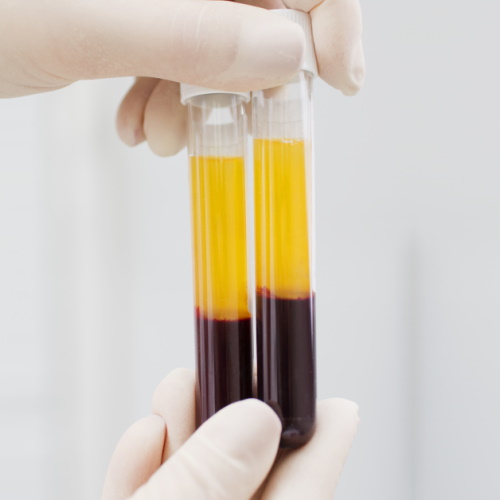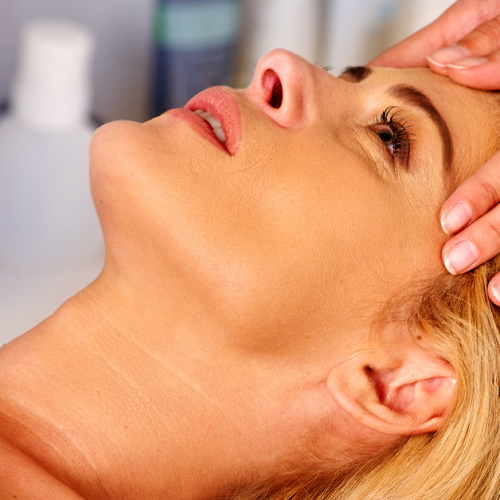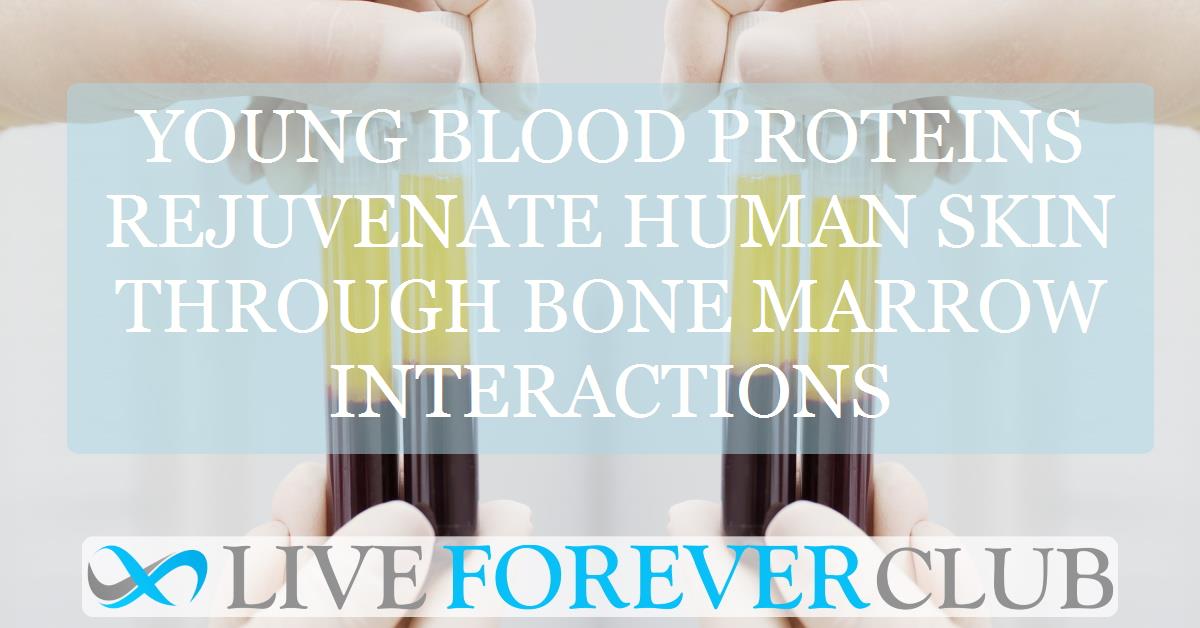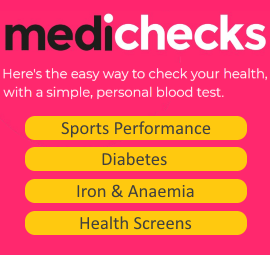Ageing transforms every tissue in the human body. Skin, our most visible organ, displays its effects early—wrinkles, sagging, and thinning. Scientists have long suspected that blood carries clues to reversing these processes. Experiments in mice, where old and young animals were surgically joined to share circulation (a process called heterochronic parabiosis), revealed dramatic rejuvenation. Old mice exposed to young blood healed faster, regenerated tissues, and even showed improvements in memory.
Yet, translating these discoveries to humans has proven far more challenging. Which molecules in young blood matter? How do they interact with tissues? Can the effects be replicated outside living organisms? A new paper published in Aging addresses these questions with a fresh approach: recreating “youthful circulation” in the lab using advanced microphysiological systems.
The researchers behind this work developed a dynamic model combining 3D human skin and bone marrow cultures. By exposing these models to young or old human serum, they identified specific proteins linked to skin rejuvenation. Their findings shed light on systemic factors that could eventually become therapies for healthier ageing.
Why Skin is the Perfect Window Into Ageing
Skin reflects biological age more visibly than almost any other organ. The decline in cell turnover, reduced collagen production, and impaired barrier function make ageing skin an ideal subject for rejuvenation studies.
At the molecular level, one of the most reliable measures of skin ageing is DNA methylation patterns—tiny chemical tags on DNA that act as “epigenetic clocks.” These clocks often advance faster in stressed or damaged tissues. If blood-borne molecules can reset them, it would provide powerful evidence of rejuvenation.
But skin does not exist in isolation. It is deeply connected to immune cells and circulating factors from bone marrow. This inter-organ communication suggested that a successful in vitro model needed more than skin alone.
The Innovation: Building a Human Microphysiological System
Traditional experiments grow skin cells or tissues in dishes. However, these static models lack complexity. The research team instead used organ-on-a-chip technology, which allows tissues to be grown in interconnected chambers with circulating fluid—closely mimicking real blood flow.
They combined two models:
A 3D full-thickness skin model with epidermis and dermis.
A bone marrow model seeded with stem cells that differentiated into immune and progenitor cells.
Together, these tissues were co-cultured in a dynamic microfluidic system called the HUMIMIC Chip3plus. This setup allowed continuous exchange of molecules, resembling human physiology far more closely than static culture.
First Test: Does Young Serum Alone Rejuvenate Skin?
The team’s initial hypothesis was simple: if young blood is rejuvenating, then applying young serum directly to skin models should reduce ageing markers.
Surprisingly, it did not.
When skin was cultured with serum from donors under 30 and compared to serum from donors over 60, no differences were observed. Neither proliferation markers (like Ki67) nor epigenetic age clocks showed significant improvement. Even extending the culture time from 7 days to 3 weeks did not change the outcome.
This was a critical finding: skin requires systemic interactions with other cells, not serum alone, to rejuvenate.
Adding Bone Marrow: Unlocking the Effect
The breakthrough came when bone marrow was introduced into the system.
With bone marrow cells present, the story changed dramatically:
Skin proliferation increased when exposed to young serum.
Epigenetic clocks ticked backwards, showing reduced biological age.
Mitochondrial function improved in bone marrow cells, a key hallmark of cellular youth.
These changes highlighted a crucial principle: young serum acts indirectly, influencing bone marrow first, which then communicates rejuvenating signals to skin.
The Search for Molecular Messengers
To uncover which molecules mediated these effects, the researchers performed proteomic analysis—a large-scale survey of all proteins secreted by bone marrow under young vs. old serum conditions.
They identified 55 proteins that differed significantly. Many were already known to change with age in human plasma. Among these, seven proteins stood out as promising rejuvenators:
Cystatin-F (CST7)
Interleukin-1 receptor antagonist (IL1RN)
Complement decay-accelerating factor (CD55)
Kunitz-type protease inhibitor 1 (SPINT1)
Matrix metalloproteinase-9 (MMP-9)
Fc fragment of IgA receptor (FCAR)
Chitinase-3-like protein 1 (CHI3L1)
Testing the Candidates: Proteins That Reverse Ageing Markers
The team treated old human fibroblasts and keratinocytes with these proteins. Results were striking:
Proliferation increased in cells treated with CST7, IL1RN, CD55, SPINT1, MMP-9, CHI3L1, and GDF-11 (a known rejuvenator).
Procollagen and hyaluronic acid production rose, restoring two vital components of youthful skin structure.
Mitochondrial membrane potential improved, suggesting better energy balance.
Fibroblasts gained plasticity, differentiating into adipocyte-like cells, a hallmark of youthful flexibility.
Among them, CHI3L1 stood out—improving six separate markers of ageing, even outperforming GDF-11.
Why Bone Marrow Matters
This study underscores bone marrow’s central role in systemic ageing. Ageing bone marrow produces fewer stem cells, more inflammatory signals, and less regenerative support for tissues. Young serum shifted these dynamics—boosting progenitor cells, reducing harmful granulocytes, and secreting proteins that restored skin vitality.
The implication is profound: rejuvenation therapies may not work by targeting organs directly. Instead, they may need to first reset bone marrow so that it resumes its youthful crosstalk with the body.
A Paradigm Shift in Human Rejuvenation Research
Animal studies hinted that young blood could reverse ageing, but this study brings the concept closer to humans. For the first time, researchers reproduced rejuvenation in a human-based microphysiological model, identifying concrete molecular drivers.
The discovery that serum alone is insufficient, but serum plus bone marrow unlocks rejuvenation, reshapes how we think about systemic ageing. It suggests therapies may require multi-organ strategies rather than single-target interventions.
Limitations and Next Steps
Like all groundbreaking studies, this one has caveats:
The experiments were performed in vitro, outside the body. Translating to living humans will be more complex.
Growth factors were added to sustain bone marrow cultures, which could partly influence results.
Proteins are only part of the story—exosomes, metabolites, and microRNAs may also contribute.
Future research could:
Test these proteins in combination therapies.
Extend culture times to mimic chronic ageing.
Integrate other organ models, such as kidney or liver, into systemic rejuvenation studies.
Explore whether “young marrow resets” can be safely achieved in patients.
Broader Implications: Medicine, Longevity, and Ethics
If young-blood factors or their mimics can reverse skin ageing, could they also slow whole-body decline? Early evidence suggests yes. Epigenetic clocks in blood, liver, and brain also respond to youthful signals in animals.
Potential applications include:
Regenerative medicine: using protein cocktails to aid wound healing.
Anti-ageing skincare: translating systemic proteins into topical treatments.
Longevity medicine: slowing biological clocks to extend healthspan.
However, ethical challenges loom. Direct transfusion of young plasma into older patients is controversial and raises safety questions. The identification of specific proteins offers a safer path: designing therapies without needing actual young blood.
Conclusion: Towards Evidence-Based Rejuvenation
This study provides the clearest evidence yet that youthful systemic factors, acting through bone marrow, can rejuvenate human skin. It marks a transition from speculative “vampire therapies” towards precise, protein-based science.
By showing that seven proteins can reverse hallmarks of skin ageing in human cells, the work lays groundwork for future treatments. It also reframes ageing as a process not of isolated organs but of systemic dialogue—one that can potentially be reset.
For now, the fountain of youth remains in the lab. But with every discovery like this, it moves closer to the clinic.
The study is published in the journal Aging. It was led by researchers from Coburg University of Applied Sciences and Arts.






